Kildare, a county steeped in myth and history, has been a witness to Ireland’s evolving story for millennia. From its ancient origins as a pagan shrine to its modern incarnation as a thriving commuter county, Kildare has played a pivotal role in shaping the nation’s religious, cultural, and political landscape. This article traces the rich tapestry of Kildare’s history, from the sacred fires of the Celtic goddess Brigid to the high-tech industries of the 21st century. Through invasions, rebellions, cultural revivals, and economic transformations, Kildare has consistently adapted and reinvented itself, all while maintaining a unique identity rooted in its storied past. Join us as we explore the fascinating journey of this county that has been at the crossroads of Irish history for over 1,500 years.
Contents
Ancient Origins and Pagan Roots
The area now known as Kildare has a rich history dating back to prehistoric times. Archaeological evidence suggests human presence in the region since the Neolithic period, with notable Bronze and Iron Age sites scattered across the landscape.
The most significant pre-Christian feature of Kildare was its association with the Celtic goddess Brigid. The site that would later become Kildare town was originally a pagan shrine dedicated to this powerful deity. Brigid was revered as the goddess of poetry, healing, and smithcraft, as well as being associated with fire and the coming of spring.
At this ancient shrine, a sacred fire was maintained by a group of young women, possibly priestesses. This perpetual flame symbolized the enduring power of the goddess and was a center of pagan worship. The site was likely chosen for its strategic location on a ridge known as Druim Criadh (ridge of clay), which offered both defensive advantages and spiritual significance.
The name “Kildare” itself reflects these pagan roots. While the modern name comes from the Irish “Cill Dara” meaning “Church of the Oak,” this refers to a large oak tree that stood on the site. Oaks were sacred to the Celts, often serving as focal points for religious ceremonies and believed to be doorways to the otherworld.
This pagan heritage laid the foundation for Kildare’s later importance as a Christian center, with many of the attributes of the goddess Brigid being incorporated into the cult of St. Brigid, who would establish her famous monastery on the same site in the 5th century.
The Curragh, a vast plain near Kildare town, also has ancient significance. Legend associates it with the Fianna, the legendary warrior band of Irish mythology, and their leader Fionn Mac Cumhaill. Archaeological finds suggest the Curragh was used for gatherings, rituals, and possibly as a burial ground in prehistoric times.
St. Brigid and the Founding of Kildare Monastery
The founding of Kildare Monastery by St. Brigid in the late 5th century marks a pivotal moment in the history of Kildare, transforming it from a pagan shrine to a major Christian center.
St. Brigid, born around 451 AD, is one of Ireland’s patron saints and a key figure in the country’s conversion to Christianity. According to tradition, Brigid was the daughter of a pagan chieftain and a Christian slave woman. Some accounts suggest she may have been a member of the community that tended the pagan shrine before her conversion to Christianity.
Around 470 AD, Brigid founded her monastery on the site of the former pagan shrine. The location was granted to her by the King of Leinster. Legend has it that when Brigid asked for land, the king agreed to give her as much as her cloak could cover. Miraculously, her cloak spread out to cover the entire Curragh plain.
Brigid’s foundation was unique in early Christian Ireland. It was a double monastery, housing both men and women, with Brigid as abbess presiding over both communities. This arrangement was rare and speaks to Brigid’s exceptional status and influence.
The monastery quickly became a center of learning and spirituality. A school was established that attracted students from across Ireland and even from abroad. The community was known for its scholarship, art (particularly metalwork and illuminated manuscripts), and hospitality.
Interestingly, many pagan traditions associated with the goddess Brigid were incorporated into the Christian practices at Kildare. Most notably, the perpetual flame that had burned at the pagan shrine was maintained by the nuns of St. Brigid’s monastery, symbolizing the light of Christ.
The church built by Brigid became known as “Cill Dara” or “Church of the Oak,” giving the town its name. This church was the predecessor of the current St. Brigid’s Cathedral, which stands on the same site.
Under Brigid’s leadership and that of her successors, Kildare grew in importance. By the 7th century, the monk Cogitosus described Kildare as “a vast metropolitan city,” indicating its significance as a religious and cultural center.
St. Brigid died around 525 AD, but her legacy continued to shape Kildare. The monastery she founded flourished for centuries, despite periodic Viking raids and political upheavals, cementing Kildare’s place as one of the three most important Christian foundations in early medieval Ireland.
Early Christian Era and Growth of the Settlement
Following St. Brigid’s founding of the monastery, Kildare entered a period of significant growth and development during the Early Christian era, establishing itself as a major ecclesiastical center in Ireland.
By the 7th century, Kildare had evolved from a simple monastic settlement into what Cogitosus, a monk of the Kildare community, described as “a vast metropolitan city.” This description, while perhaps exaggerated, indicates that Kildare had developed urban characteristics well before the Viking era, when most Irish towns began to emerge.
The monastery continued to flourish, becoming renowned as a center of learning, art, and spirituality. Its school attracted students not only from across Ireland but also from abroad, contributing to the spread of Irish monasticism and scholarship throughout Europe. The community was particularly noted for its expertise in metalwork and the production of illuminated manuscripts.
Kildare’s importance in the early Christian period is evident from its ecclesiastical status. It became the seat of a bishopric, with the abbess of Kildare holding an unusual dual role. She was not only the head of the female religious community but also had authority over the local bishop, a unique arrangement in the Irish church.
The settlement grew around the monastery, with evidence of urban planning. There’s mention of a “street of the stone steps” in Kildare at the beginning of the 10th century, suggesting a developed townscape. As the monastic community expanded, so did the need for artisans, traders, and agricultural workers, contributing to the growth of a secular settlement alongside the religious center.
Kildare’s strategic location on the edge of the Curragh plain, combined with its religious significance, also made it an important political center. The local kings of Leinster, based in nearby Naas, maintained close ties with Kildare, recognizing its importance and often seeking to control it.
The monastery’s wealth and prestige made it a target for raids, both by Vikings and rival Irish kingdoms. Despite these challenges, Kildare remained an important center throughout the early medieval period. The community managed to preserve and even enhance its status, with the cult of St. Brigid spreading far beyond Kildare itself.
Archaeological evidence, including the round tower (which likely dates from this period), as well as numerous artifacts discovered in the area, testifies to the richness of Kildare’s early Christian culture. The Book of Kildare, a now-lost illuminated manuscript that was said to rival the Book of Kells in its beauty, was produced during this era, further highlighting Kildare’s cultural and artistic significance.
By the eve of the Norman invasion in the 12th century, Kildare had established itself as one of the most important ecclesiastical and urban centers in Ireland, with a history and influence that stretched back over half a millennium.
Viking Raids and Medieval Period
The Viking era and subsequent medieval period brought significant challenges and changes to Kildare, marking a turbulent chapter in its history.
Viking Raids
From the late 8th century onwards, Kildare, like many other ecclesiastical centers in Ireland, became a target for Viking raids. The Annals of the Four Masters record a particularly devastating attack in 835 AD:
“A Danish fleet of thirty ships arrived in the Liffey and another in the Boyne. They plundered every church and abbey within the territories of Magh Liffe and Magh Breagh. They destroyed the town [Kildare] with fire and sword and carried off the shrines of St Brigid and St Conleth.”
These raids were not isolated incidents. The Annals of Ireland contain numerous references to attacks on Kildare throughout the 9th, 10th, and 11th centuries. The monastery’s wealth, including its precious metalwork and illuminated manuscripts, made it an attractive target for the Norse invaders.
Despite the destruction wrought by these raids, Kildare showed remarkable resilience. The monastic community managed to rebuild and recover after each attack, though the constant threat of violence undoubtedly affected the town’s development and prosperity.
Medieval Period
As the Viking age transitioned into the medieval period, Kildare faced new challenges and opportunities. The arrival of the Normans in Ireland in 1169 marked a significant turning point. Shortly after landing, the Normans occupied Kildare, with Strongbow (Richard de Clare) making it a center for his campaign to conquer Leinster.
The Norman period saw the construction of Kildare’s first stone castle in the early 13th century, built by the Earl Marshal on the site of the present castle. This fortification reflected Kildare’s strategic importance as a frontier town of the Pale, the area of Norman control around Dublin.
During this time, Kildare Cathedral was also constructed, replacing the earlier church. Other religious houses were established, including abbeys for various orders, adding to the town’s ecclesiastical significance.
The Fitzgerald family, who became Earls of Kildare, emerged as a dominant force in the region during the later medieval period. Although they established their main seat at Maynooth, their influence over Kildare town and the surrounding area was significant.
Kildare’s position on the edge of the Pale meant it was subject to frequent raids by dispossessed native Irish clans. The castle withstood a siege by Edward Bruce in the winter of 1315/16, highlighting the town’s strategic importance and the turbulent nature of the period.
Despite these challenges, Kildare maintained its religious and cultural significance throughout the medieval period. The cult of St. Brigid continued to attract pilgrims, and the town remained an important ecclesiastical center.
By the end of the medieval period, Kildare had evolved from its origins as a monastic settlement into a fortified town with a mix of religious and secular buildings, reflecting its complex history of invasion, resistance, and adaptation.
Norman Conquest and Fitzgerald Family Influence
The Norman Conquest of Ireland, beginning in 1169, marked a significant turning point in Kildare’s history. This period saw the rise of Norman influence and the emergence of the Fitzgerald family as a dominant force in the region.
Norman Arrival
Shortly after the initial Norman landing in Ireland, led by Richard de Clare (Strongbow), Kildare was occupied by Norman forces. The town’s strategic location made it an important base for the Norman campaign to conquer Leinster. This early occupation set the stage for centuries of Norman and later Anglo-Norman influence in Kildare.
Fortification and Development:
The Normans quickly recognized Kildare’s strategic importance. In the early 13th century, the Earl Marshal (William Marshal) constructed the first stone castle in Kildare on the site where the present castle stands. This fortification was crucial in establishing Norman control and defending against raids from native Irish clans.
During this period, Kildare Cathedral was also rebuilt, reflecting the Norman style of architecture. The town’s layout was likely reorganized along Norman lines, with the castle and cathedral forming the focal points of the settlement.
Rise of the Fitzgeralds
Among the Norman families that settled in Ireland, the Fitzgeralds emerged as one of the most powerful and influential. Their connection to Kildare began in 1316 when John Fitzgerald was created Earl of Kildare. This marked the beginning of a long and significant association between the Fitzgerald family and the county.
The Fitzgeralds, while establishing their main seat at Maynooth Castle, exerted considerable influence over Kildare town and the surrounding areas. They became known as the “Geraldines” and were one of the most important Anglo-Norman families in Ireland.
Under Fitzgerald rule, Kildare maintained its importance as a frontier town of the Pale – the area of English control around Dublin. The Earls of Kildare often acted as mediators between the English crown and the Gaelic Irish chieftains, a role that increased their power and influence.
Kildare as a Frontier Town
Kildare’s position on the edge of the Pale meant it was frequently subject to raids by dispossessed native Irish clans. The castle and town defenses were crucial in maintaining Norman control in the face of these challenges. One notable event was the siege of Kildare Castle by Edward Bruce in the winter of 1315-16, which the town successfully withstood.
Religious and Cultural Impact:
Despite the political and military changes brought by the Normans, Kildare maintained its religious significance. The cult of St. Brigid continued to attract pilgrims, and the town remained an important ecclesiastical center. The Normans, and particularly the Fitzgeralds, became patrons of religious houses, founding or supporting various abbeys and friaries in the area.
Legacy
The Norman conquest and the subsequent influence of the Fitzgerald family profoundly shaped Kildare’s development. They transformed it from a primarily ecclesiastical settlement into a fortified Norman town, integrating it into the broader political and military structures of Norman Ireland.
The Fitzgerald family’s influence extended well beyond the medieval period, playing a significant role in Irish history up to the 16th century. Their legacy is still evident in the architecture, place names, and cultural heritage of Kildare today.
This era laid the foundation for Kildare’s role in later centuries as a key site in the complex relationships between the English crown, the Anglo-Irish nobility, and the native Irish population.
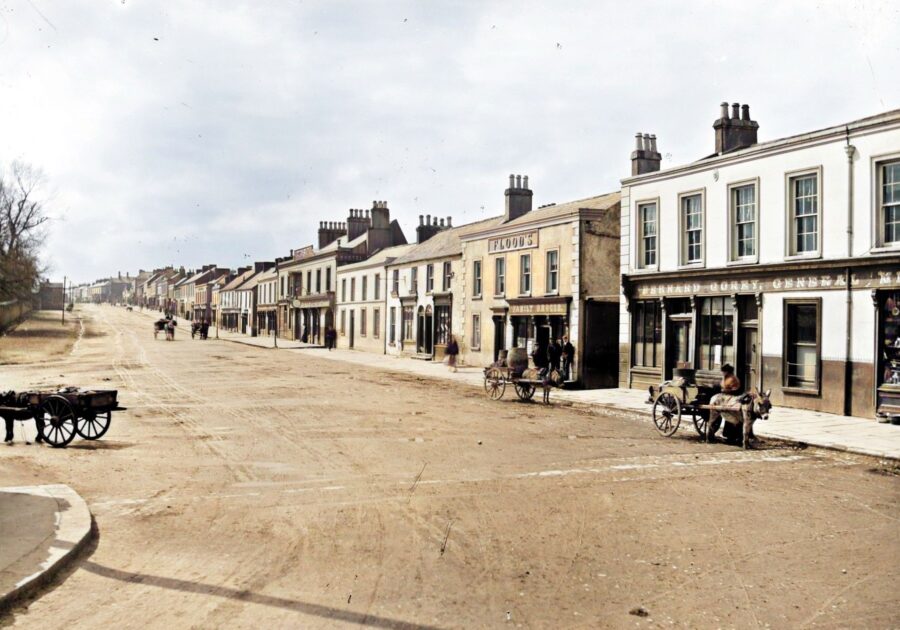
Tudor and Cromwellian Periods
The Tudor and Cromwellian periods marked significant changes for Kildare, characterized by religious upheaval, political turmoil, and shifting power dynamics.
Tudor Era
The Tudor dynasty’s rule over Ireland, beginning in the late 15th century, brought major changes to Kildare. The most significant was the Reformation, which had profound effects on the religious landscape of the town and county.
In 1538, during the reign of Henry VIII, the monasteries were suppressed. This included the Carmelite Friary (White Abbey) in Kildare, which was surrendered on April 3, 1539. The dissolution of the monasteries marked a significant shift in Kildare’s religious and social fabric, as these institutions had been central to the town’s identity for centuries.
The Fitzgerald family, long-time rulers of Kildare, faced challenges during this period. In 1534, Silken Thomas Fitzgerald led a rebellion against Henry VIII, which ultimately failed. This led to a temporary decline in Fitzgerald influence, though they later regained much of their power.
Despite these changes, Kildare maintained its strategic importance. The first English bishop of Kildare, Ralph of Bristol, was appointed in 1223, but it was under Tudor rule that the Anglican Church truly took hold. In 1540, William Miagh became the first post-Reformation bishop of Kildare, appointed by Henry VIII in opposition to the Pope’s candidate.
Cromwellian Period
The mid-17th century brought further upheaval with the Cromwellian conquest of Ireland (1649-1653). This period saw significant changes in land ownership and religious practice.
Kildare, like much of Ireland, suffered during the Confederate Wars of the 1640s. The town was garrisoned, and the cathedral was severely damaged – legend has it that it was bombarded by Lord Castlehaven. Following these conflicts, Kildare was described as being nearly uninhabited.
Under Cromwell’s rule, many Catholic landowners in Kildare were dispossessed, and their lands were given to Protestant settlers. This dramatically altered the social and economic landscape of the county.
The Penal Laws, which discriminated against Catholics and Dissenters, were enforced during this period and continued into the 18th century. However, despite these restrictions, many Catholic institutions in Kildare managed to continue operating clandestinely. For instance, the Carmelite Friars, though officially suppressed, continued to minister secretly to the local population.
Impact and Legacy
The Tudor and Cromwellian periods left a lasting impact on Kildare:
- Religious landscape: The dominance of the Catholic Church was challenged, with the establishment of the Anglican Church of Ireland. However, a significant portion of the population remained Catholic.
- Land ownership: The confiscation and redistribution of land altered the social and economic structure of the county.
- Architecture: Many of Kildare’s medieval religious buildings were damaged or repurposed during this time.
- Population: The wars and upheavals of this period led to significant population changes, with Kildare described as nearly uninhabited at one point.
- Political allegiances: The events of this era shaped political and religious allegiances that would influence Kildare’s history for centuries to come.
Despite the turmoil of these periods, Kildare’s strategic importance ensured its continued significance. The town and county would go on to play important roles in later Irish history, including the 1798 rebellion and the struggle for independence.
1798 Rebellion and Lord Edward Fitzgerald
The 1798 Rebellion was a pivotal moment in Irish history, and Kildare played a significant role in this uprising against British rule. The rebellion was particularly notable in Kildare due to the involvement of Lord Edward Fitzgerald, a prominent local figure and key leader of the United Irishmen.
Prelude to Rebellion
The late 18th century saw growing discontent in Ireland, fueled by economic hardship, religious discrimination, and the influence of the American and French Revolutions. The Society of United Irishmen, founded in 1791, sought to unite Catholics, Protestants, and Dissenters in pursuit of Irish independence.
Lord Edward Fitzgerald
Lord Edward Fitzgerald, born in 1763, was a son of the Duke of Leinster and had his family seat at Carton House in Kildare. Despite his aristocratic background, Fitzgerald became a leading figure in the United Irishmen and a key architect of the planned rebellion.
Fitzgerald’s involvement brought the preparations for rebellion close to home in Kildare. He used his connections and influence to organize and arm rebels throughout the county and beyond. His status as a Protestant aristocrat joining the predominantly Catholic movement was seen as a powerful symbol of unity.
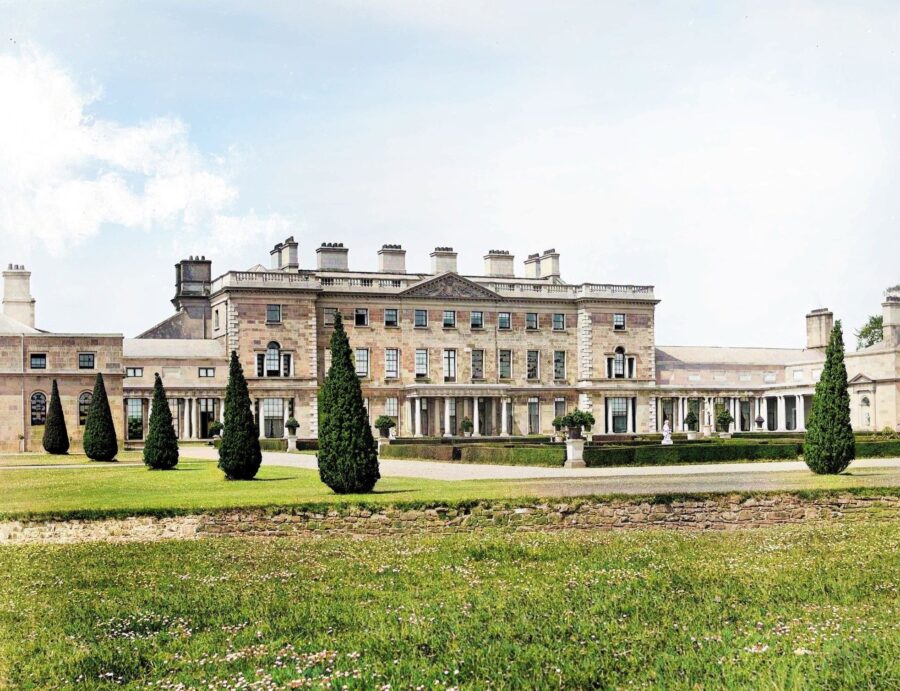
The Outbreak of Rebellion
The rebellion in Kildare broke out on May 23-24, 1798. Key events included:
- Attacks on Ballymore-Eustace, Naas, Prosperous, and Clane.
- A significant engagement at Rathangan, where rebels initially captured the town.
- The Battle of Ovidstown on June 19, where rebel forces were defeated by Crown forces.
One of the most tragic events of the rebellion in Kildare was the Gibbet Rath massacre. On May 29, 1798, about 350 rebels who had agreed to surrender were massacred by government forces on the Curragh of Kildare, despite assurances of their safety.
Fate of Lord Edward Fitzgerald
Lord Edward Fitzgerald did not live to see the outbreak of the rebellion he had helped plan. On May 19, 1798, he was arrested in Dublin after a fierce struggle. Severely wounded during his capture, he died of his injuries on June 4, 1798, becoming a martyr to the cause of Irish independence.
Aftermath
The rebellion in Kildare, as in much of Ireland, was ultimately unsuccessful. Crown forces, often using brutal tactics, managed to suppress the uprising within a few months. Many rebels were executed or transported to penal colonies, and a period of harsh repression followed.
Legacy
The 1798 Rebellion and the role of Lord Edward Fitzgerald left a lasting impact on Kildare and Ireland as a whole:
- It strengthened the connection between Kildare and the cause of Irish nationalism.
- Lord Edward Fitzgerald became a romantic figure in Irish revolutionary history, celebrated in song and story.
- The events of 1798 contributed to the eventual passage of the Act of Union in 1800, which abolished the Irish Parliament and created the United Kingdom of Great Britain and Ireland.
- The rebellion’s failure led to increased British military presence in Ireland, including the expansion of the Curragh Camp in Kildare.
Today, various sites in Kildare commemorate the 1798 Rebellion and Lord Edward Fitzgerald, including a memorial at Gibbet Rath and exhibits in local museums. The events of 1798 remain an important part of Kildare’s historical identity, symbolizing the county’s role in the broader struggle for Irish independence.
19th Century Developments (Military Barracks, Canals, etc.)
The 19th century brought significant developments to Kildare, transforming its landscape, economy, and strategic importance. This period saw the construction of military barracks, the development of canal systems, and the advent of the railway, all of which had profound impacts on the county.
Military Barracks
Kildare’s strategic location led to the establishment of several important military installations:
- Naas Barracks (1813): Built on the main Dublin to Cork road.
- Newbridge Barracks (1819): Established on the Dublin to Limerick road.
- Curragh Camp (1855): Developed into a major military training center.
- Kildare Town Barracks (1901): Constructed at the turn of the century.
These barracks played a crucial role in Kildare’s development, bringing a steady influx of soldiers and their families. Many settled permanently in the area, contributing to the county’s demographic and cultural makeup. The preponderance of English, Scottish, and Welsh names in Kildare attests to this military influence.
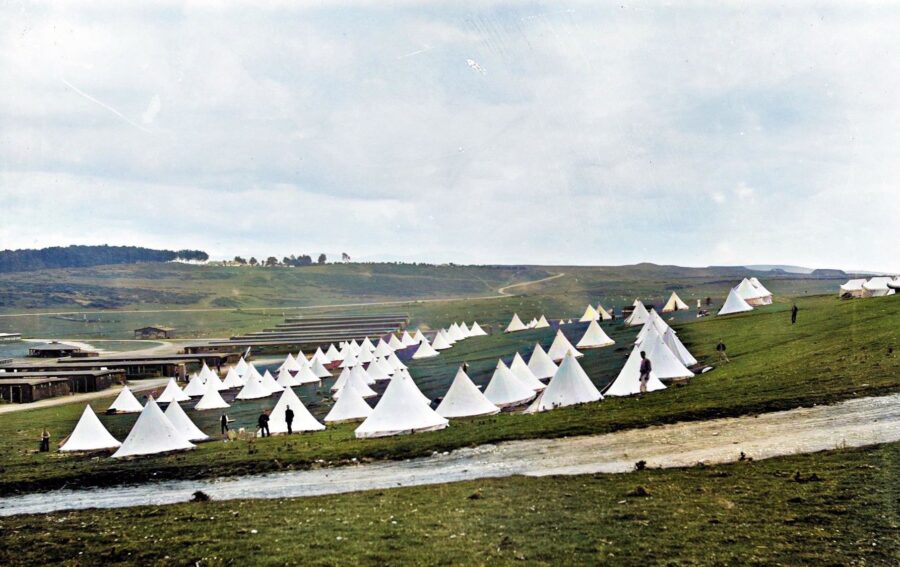
Canal Development
The 19th century saw the completion and operation of two major canal systems through Kildare:
- Grand Canal: Construction began in 1756 and was completed in the early 19th century. It traversed Kildare from Lyons in the east to Rathangan and Monasterevin in the west. A branch from Robertstown went south to Athy, connecting with the River Barrow.
- Royal Canal: Started in 1789, it stretched across the north of the county along the border with Meath.
These canals significantly improved transportation and commerce, allowing for easier movement of goods between Dublin and the midlands. They also brought new opportunities for trade and industry to the towns along their routes.
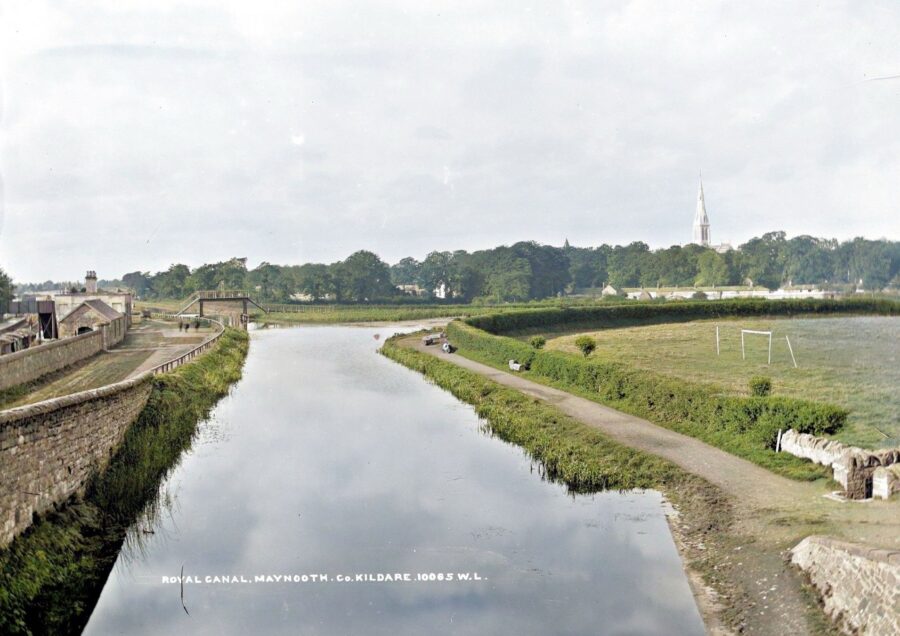
Railway
The mid-19th century saw the arrival of the railway in Kildare. The Dublin to Cork mainline, which passed through Kildare town, opened in 1846. This further enhanced the county’s connectivity and economic prospects.
Agricultural Developments
The 19th century saw the growth of Kildare’s association with horse breeding and racing. The Curragh, long used for military training, became increasingly important as a center for horse racing. The Irish National Stud was established near Kildare town in 1900, cementing the county’s reputation in the equine industry.
Industrial Growth
While Kildare remained largely rural, some industrial development occurred. The town of Celbridge, for instance, saw the establishment of several mills along the Liffey.
Famine Impact
The Great Famine of 1845-1849 affected Kildare, though less severely than other parts of Ireland. The county’s relatively low population density (187 people per square mile of arable land, the lowest in Ireland) and its proximity to Dublin helped mitigate the worst effects. Nevertheless, the population did decline from 114,488 in 1841 to 95,723 in 1851.
Educational Developments
The establishment of St. Patrick’s College in Maynooth in 1795 (though founded earlier) as a seminary for Catholic priests was a significant development. It became an important center of learning in the 19th century.
Legacy
These 19th-century developments laid the groundwork for modern Kildare. The military installations, particularly the Curragh Camp, continued to play important roles well into the 20th century. The canals and railways, while superseded by road transport in the 20th century, left a lasting impact on the county’s geography and heritage. The growth of the horse breeding and racing industry set the stage for Kildare’s modern reputation as the center of Ireland’s equine industry.
Early 20th Century: Gaelic Revival and Independence Movement
The early 20th century was a period of significant cultural and political change in Ireland, and Kildare was no exception. This era saw the rise of the Gaelic Revival movement and growing support for Irish independence, both of which had profound impacts on the county.
Gaelic Revival
The Gaelic Revival, which began in the late 19th century, gained significant momentum in Kildare during the early 1900s. This cultural movement aimed to revive interest in the Irish language, literature, sports, and traditions. In Kildare, this manifested in several ways:
- Gaelic League: Branches of the Gaelic League were established throughout the county, promoting the Irish language and culture. These branches organized language classes, traditional music sessions, and cultural events.
- GAA: The Gaelic Athletic Association, founded in 1884, saw increased popularity in Kildare. The county team won the All-Ireland Football Championship in 1905, 1919, and 1927, boosting local pride and interest in Gaelic games.
- Literature and Arts: There was a renewed interest in local folklore, traditional music, and Irish literature. Local historians began documenting Kildare’s rich history and traditions.
Independence Movement
As nationalist sentiment grew across Ireland, Kildare played its part in the struggle for independence:
- Irish Volunteers: Many Kildare men joined the Irish Volunteers after their formation in 1913. These volunteers would later play roles in the Easter Rising and War of Independence.
- Easter Rising: While Kildare did not see direct action during the 1916 Easter Rising, many Kildare natives participated in the fighting in Dublin. The aftermath of the Rising saw increased support for independence in the county.
- War of Independence (1919-1921): Kildare was less active than some other counties during this conflict, partly due to its strong military presence. However, there were several incidents, including attacks on RIC barracks and acts of sabotage against military installations.
- Civil War (1922-1923): The county was largely pro-Treaty during the Irish Civil War. The Curragh Camp was used as an internment camp for anti-Treaty prisoners.
Land Reform
The early 20th century saw significant changes in land ownership in Kildare, as elsewhere in Ireland. The Land Acts allowed many tenant farmers to purchase their land, transforming the rural landscape and social structure of the county.
Economic Changes
The period saw some industrial development in Kildare, including:
- The establishment of Irish Ropes (later Bord na Móna) in Newbridge in the 1930s.
- The growth of the cutlery industry in Newbridge.
- The continued development of the equine industry, with the Irish National Stud playing a key role.
Political Developments
Kildare saw the rise of new political movements, including Sinn Féin and the Labour Party. The Irish Parliamentary Party, which had dominated Kildare politics in the late 19th century, saw its influence wane.
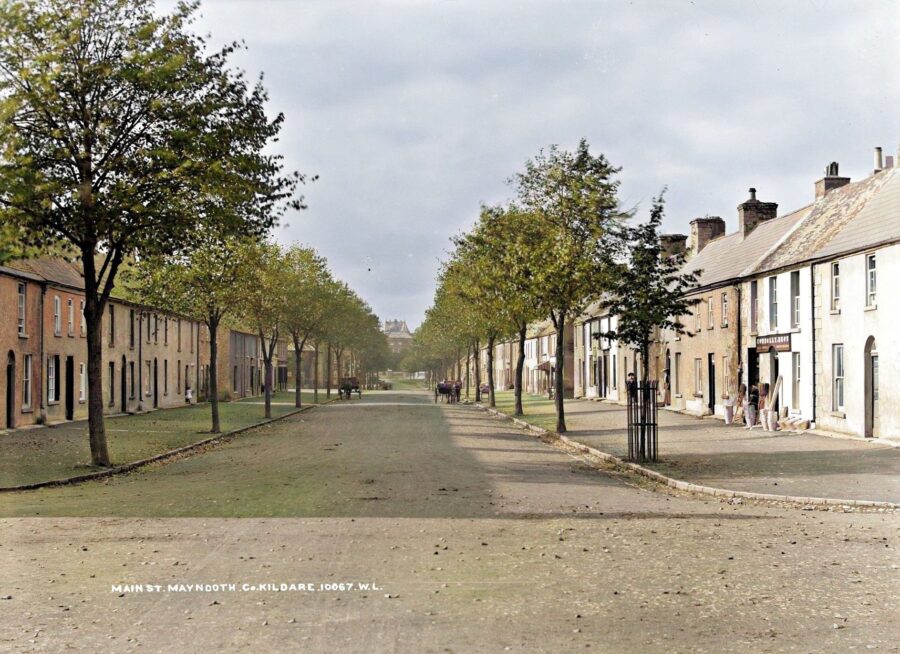
Impact of Independence
The achievement of independence in 1922 had significant impacts on Kildare:
- The withdrawal of British forces had a negative effect on the local economy, particularly in towns like Newbridge and Kildare that had large military presences.
- The Curragh Camp was taken over by the Irish Free State Army.
- New national institutions, such as An Garda Síochána, were established in the county.
Legacy
The early 20th century laid the foundations for modern Kildare. The Gaelic Revival left a lasting impact on the county’s cultural life, while the independence movement shaped its political landscape. The economic changes of this period, including land reform and early industrialization, set the stage for Kildare’s development in the latter half of the 20th century. The county’s proximity to Dublin and its strong agricultural and equine sectors would prove crucial in its future growth.
Modern Kildare: Growth and Development Since the Mid-20th Century
Since the mid-20th century, Kildare has experienced significant growth and development, transforming from a predominantly rural county to a dynamic mix of urban and rural areas. This period has seen substantial changes in population, economy, infrastructure, and the county’s relationship with Dublin.
Population Growth
Kildare has seen remarkable population growth, particularly in recent decades:
- In 1991, the population was 122,516
- By 2011, it had grown to 210,312
- As of 2022, the population reached 246,977
This growth has been driven largely by Kildare’s proximity to Dublin, with many towns becoming commuter hubs.
Economic Development
Industrial Growth: The 1960s and 1970s saw the establishment of several major industries in Kildare:
- Irish Ropes (later Bord na Móna) in Newbridge expanded
- Newbridge Cutlery became an internationally recognized brand
- The Intel facility in Leixlip, established in 1989, became a major employer
Technology and Pharmaceuticals: Since the 1990s, Kildare has attracted significant foreign direct investment:
- Hewlett-Packard set up operations in Leixlip
- Pfizer established a presence in Newbridge
Equine Industry: Kildare solidified its position as the center of Ireland’s horse breeding and racing industry:
- The Irish National Stud continued to grow in importance
- Punchestown and the Curragh racecourses became major international venues
Retail: The Kildare Village outlet centre, opened in 2007, has become a significant shopping destination and tourist attraction.
Infrastructure Development
Transport: Major improvements to road and rail infrastructure:
- The M7 motorway significantly improved connections to Dublin
- Ongoing upgrades to the Dublin-Cork railway line
Education: Expansion of third-level education:
- Maynooth University (formerly part of NUI) has grown significantly
- Establishment of Kildare Institute of Technology (now part of South East Technological University)
Housing: Rapid development of new housing estates, particularly in towns close to Dublin
Urbanization and Commuter Towns:
Towns like Naas, Newbridge, Leixlip, and Celbridge have seen significant growth, largely as commuter towns for Dublin. This has brought challenges in terms of infrastructure, services, and maintaining community identity.
Environmental Initiatives
Kildare has seen increased focus on environmental conservation:
- Protection of the Curragh and other natural heritage sites
- Development of greenways and blueways for recreation and sustainable transport
Challenges:
- Balancing growth with preservation of natural and cultural heritage
- Providing adequate infrastructure and services for the growing population
- Managing the impact of Dublin’s urban sprawl
- Addressing housing affordability issues
Cultural Developments
- Establishment of new cultural venues like the Riverbank Arts Centre in Newbridge
- Growth of festivals and events celebrating Kildare’s heritage, such as the Brigid 1500 celebrations
Looking Forward
As Kildare moves further into the 21st century, it faces the challenge of balancing its rich historical heritage with the demands of a modern, growing county. Plans for future development include:
- Continued investment in infrastructure and public transport
- Efforts to attract high-tech industries and create local employment
- Sustainable urban development to meet housing needs
- Preservation and promotion of Kildare’s unique cultural and natural heritage
Kildare’s proximity to Dublin, its strong industrial base, and its rich cultural heritage position it well for continued growth and development in the coming decades.


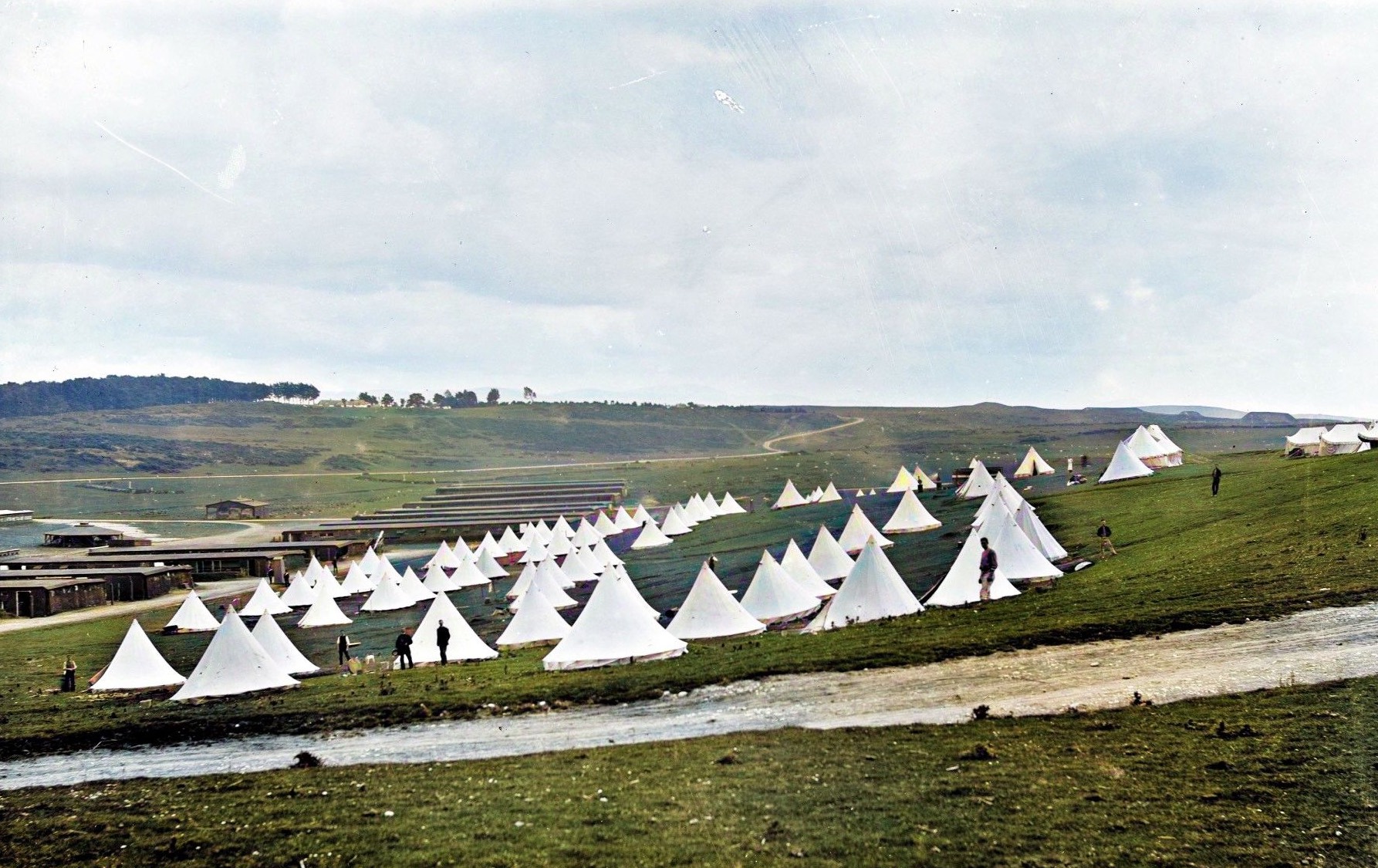
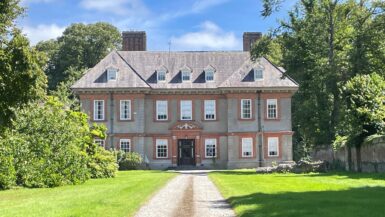
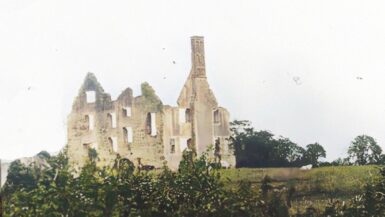
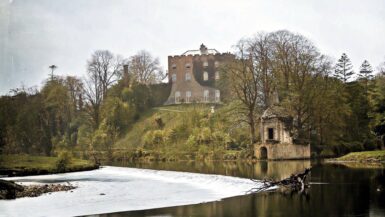
Leave a reply